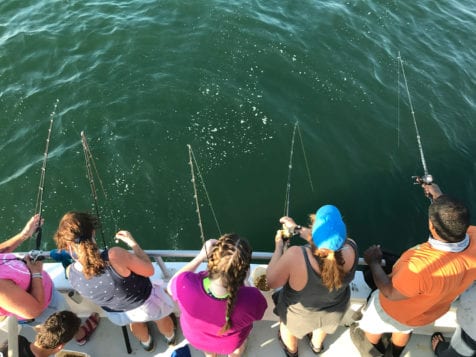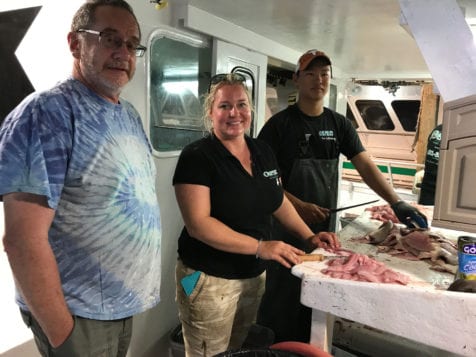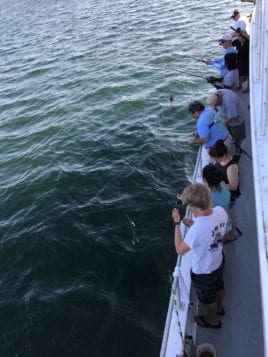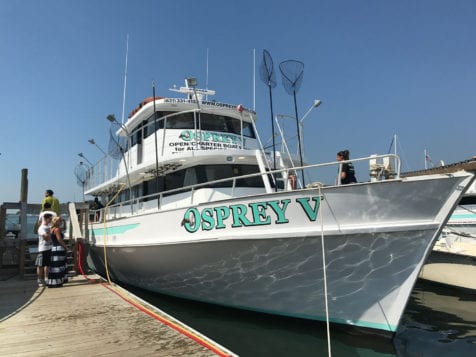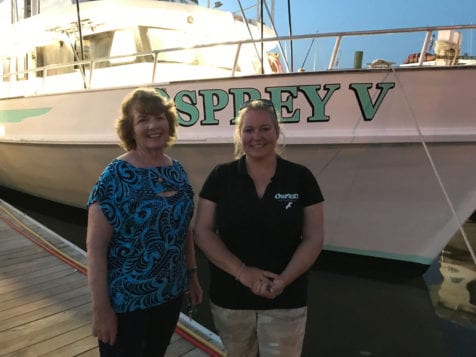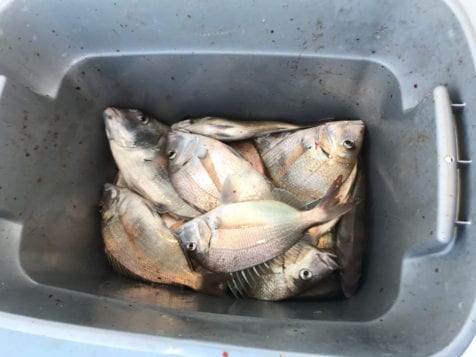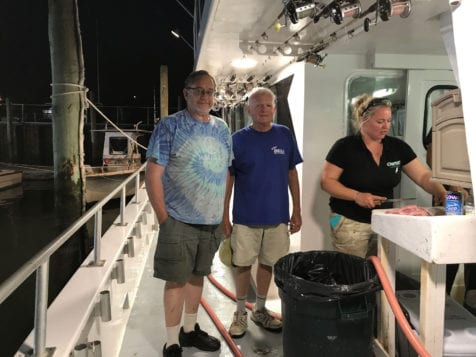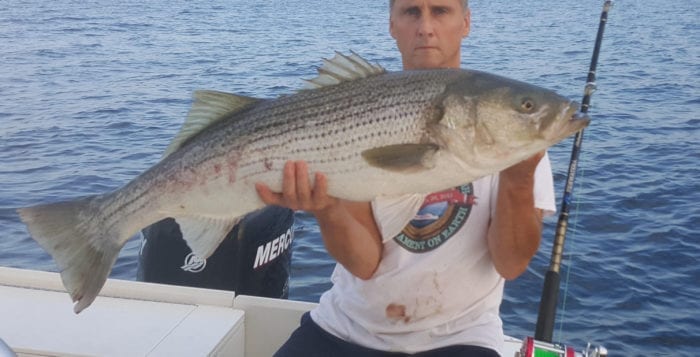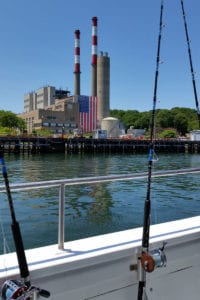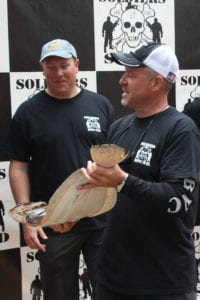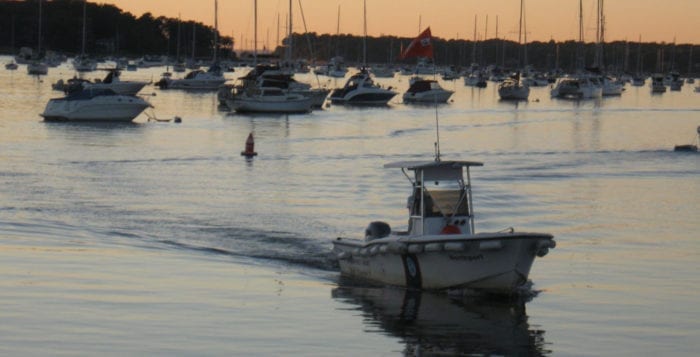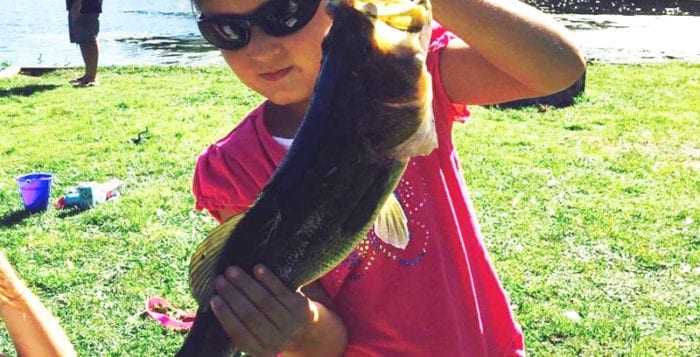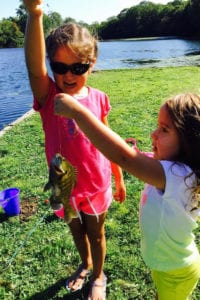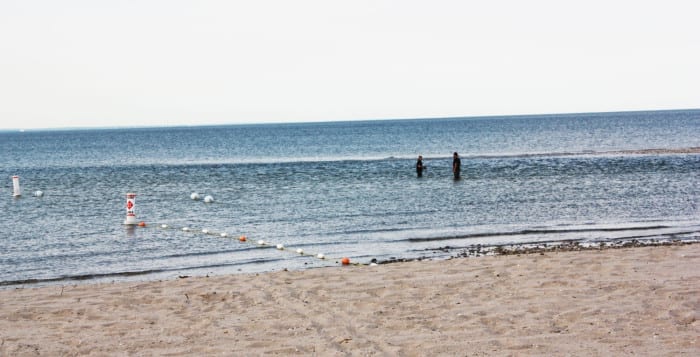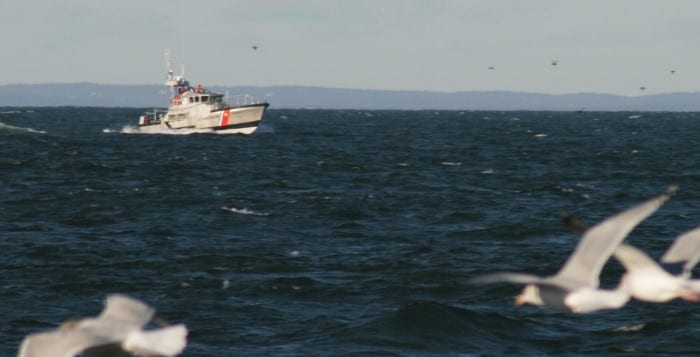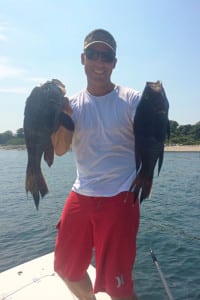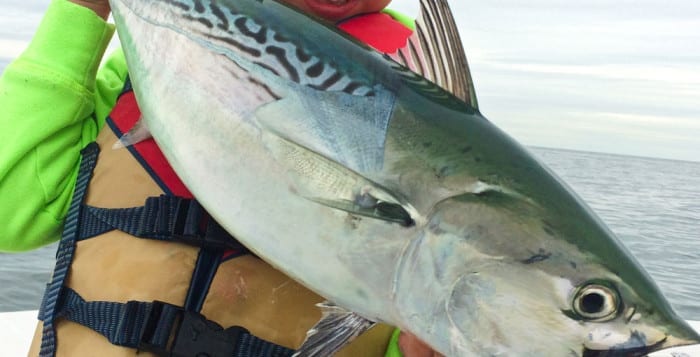For those less fortunate who require meals provided by a Port Jefferson based soup kitchen, fresh-caught fish is a luxury. But thanks to the generosity and hard work of the crew of a charter fishing boat from Port Jeff and Welcome Friends, a soup kitchen that feeds as many as 75 people daily five times per week at local churches, that luxury became a reality.
The plan started with a phone call from Amanda Peterson, third-generation owner and captain of the Osprey Fishing Fleet. She reached out to Margaret Tumilowicz, president of Welcome Friends, and asked if her guests would enjoy fresh fish to be caught and donated by her customers on a June 12 fishing trip. The company offers seats on one of their two charter ships — the Osprey and Osprey V — for day trips into the Long Island Sound to catch fluke, porgies, bluefish, striped bass, sea bass and blackfish, depending on what’s currently in season. Typically a few dozen people are on board for a given trip, and they’re allowed to take home up to 30 fish each. This time, everyone on board was there to catch fish for people in need.
Peterson said in a phone interview she got inspiration from a trip she had taken with the Lady Reelers fishing club, a local group that at least once a year donates all of their catch from an outing to the food bank Long Island Cares. This was the second attempt at a massive catch-and-donate plan, after the first in the fall fell through due to bad weather. Peterson explained why she decided she wanted to hold a similar event to the Lady Reelers’ with her business.
“It’s such a great way to give back to the community,” Peterson said. “We’re a business that’s solely supported by the community. We want to find different ways to say thank you for keeping us in business.”
On June 12, about 35 fishermen and women lined up on the dock at the Port Jefferson Marina to help the worthy cause. Visitors of Welcome Friends weren’t alone in receiving a special meal though, as the participants of the trip were also instructed to bring $25 worth of nonperishable food items to be donated to Maryhaven Center of Hope Catholic Health Services or $25 worth of dog food for the Brookhaven Town Animal Shelter. The only other fee for prospective fish catchers was $10 to offset the costs of bait and fuel for the charter.
Members of Peterson’s crew were on board to donate their time to help catch the fish, as well as filet and debone them. The trip yielded more than 1,000 porgies in about an hour and a half. The arduous task of prepping the fish for cooking took the crew of the Osprey about five hours.
“I understand going without, so it’s good to take that feeling away for somebody,” deckhand for the Osprey Fleet Travis McRae said in an interview. He joked it was easy to convince people to attend the event because everyone likes fishing.
Tumilowicz reiterated it’s a rarity for guests to have the opportunity to enjoy a dinner of fresh-caught fish.
“It makes me feel really good,” Peterson said when she heard Tumilowicz had said that.
The soup kitchen president tried to put into words what the generous gesture meant to her.
“Can you imagine — god bless them,” she said. “We cannot say enough to describe the incredible generosity of Captain Amanda and her outstanding crew as well as their customers. Because the Greater Port Jefferson community supports our soup kitchen and other like-minded local organizations, we are able to provide for our neighbors in need.”
Tumilowicz said the bounty would provide about 500 meals for needy members of the community. Once the fish were caught and fileted, Welcome Friends’ team of volunteers, including cook Arty Shertzer, Mickey Cantwell and Tumilowicz’s husband Bob prepared the meals and bagged and froze fish for future meals.
One more positive outcome came from the June 12 outing. A three-year-old pit bull named Bella who was in need of a home at the Brookhaven Animal Shelter was brought aboard for the trip and was since adopted by Eddie McRae, who was on the charter that night. Peterson said about 1,000 pounds of dog food and 500 pounds of canned goods were also part of the yield.


